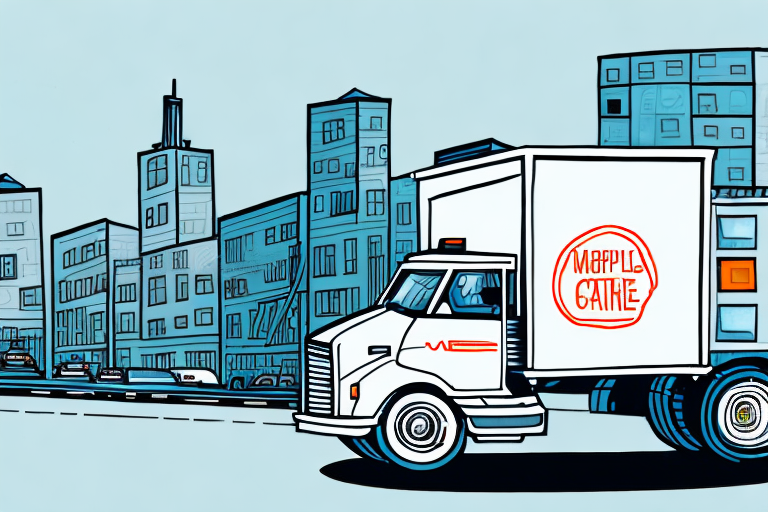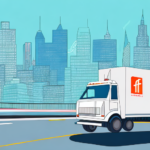Understanding Last Mile Delivery
Definition and Importance
Last mile delivery refers to the final segment of a product's journey from the warehouse or fulfillment center to the customer's doorstep. This stage is crucial as it directly impacts customer satisfaction and constitutes up to 53% of the total delivery cost [ShipScience Statistics]. With the rise of e-commerce, optimizing last mile delivery has become essential for businesses aiming to provide fast, reliable, and cost-effective services.
The primary challenge in last mile delivery is ensuring timely and accurate deliveries, especially for businesses offering same-day or next-day shipping. To address these challenges, companies are adopting innovative solutions such as drones, autonomous vehicles, and crowdsourcing. These technologies not only reduce delivery times and costs but also enhance the overall customer experience.
Evolution and Future Trends
The last mile delivery industry has seen significant transformations over recent years. Traditional delivery methods relying on couriers and postal services have been replaced by tech-driven solutions like on-demand and crowdsourced delivery models. The growth of e-commerce has been a major catalyst for these changes, driving the development of new technologies including drone delivery and autonomous vehicles [Learn more].
Future trends are expected to include further integration of robotics and artificial intelligence to streamline operations, making last mile delivery faster, more efficient, and more sustainable.
How Last Mile Delivery Companies Operate
Operational Strategies
Last mile delivery companies employ advanced routing algorithms and logistics software to plan efficient delivery routes, minimizing fuel consumption and delivery times. By pooling deliveries from multiple customers, they optimize route planning, resulting in significant cost reductions [ShipScience Operations].
Technological Integration
Integration of technologies such as GPS tracking, real-time analytics, and automated notifications allows last mile delivery companies to provide transparent and reliable services. Customers benefit from real-time order tracking and timely updates, enhancing their overall delivery experience.
Benefits of Outsourcing Last Mile Delivery
Cost Savings
Outsourcing last mile delivery enables businesses to avoid the costs associated with maintaining their own delivery fleet, including vehicle maintenance, fuel, and insurance. Industry reports indicate that companies can save up to 30% on delivery costs by partnering with specialized delivery providers [Cost Savings].
Flexibility and Scalability
Outsourcing allows businesses to adjust their delivery capacity based on seasonal demands or unexpected surges without the burden of managing additional resources internally.
Enhanced Customer Satisfaction
Partnering with reliable last mile delivery services ensures timely and accurate deliveries, leading to higher customer satisfaction and increased loyalty.
Sustainability in Last Mile Delivery
Green Delivery Options
Many last mile delivery companies are adopting sustainable practices by utilizing electric vehicles, bicycles, and other eco-friendly transportation modes. These green delivery options help reduce carbon emissions and urban air pollution.
Efficient Route Planning
Optimized route planning not only reduces fuel consumption but also minimizes the environmental impact. Additionally, some providers leverage renewable energy sources to power their operations, further enhancing sustainability efforts [Sustainability Practices].
Choosing the Right Last Mile Delivery Partner
Key Considerations
- Reliability: Ensure the provider has a proven track record of timely and accurate deliveries.
- Scalability: Ability to handle fluctuating delivery volumes as your business grows.
- Technology: Advanced tracking and analytics capabilities for real-time monitoring.
- Cost: Competitive pricing models that offer value for money.
Top Questions to Ask
- What is your delivery coverage area?
- What is your average delivery time?
- What types of delivery vehicles do you use?
- What is your pricing model?
- Do you offer real-time tracking and proof of delivery?
Overcoming Challenges in Last Mile Delivery
Traffic Congestion and Route Optimization
Urban areas often suffer from traffic congestion, leading to delayed deliveries. Implementing optimized routing algorithms and using real-time traffic data can help mitigate these delays.
Weather-Related Delays
Inclement weather can disrupt delivery schedules. Companies can use predictive analytics to anticipate and plan for such disruptions, ensuring timely deliveries whenever possible.
Package Security
To prevent package theft, last mile delivery companies can employ secure package lockers and geofencing technologies, enhancing the security of deliveries.
Measuring Success in Last Mile Delivery
Key Metrics to Track
- Delivery Time: The average time taken to deliver packages.
- Delivery Accuracy: The rate of on-time and correct deliveries.
- Customer Satisfaction: Customer feedback and ratings.
- Delivery Cost: Cost per delivery and overall delivery expenses.
Case Studies: Success Stories
Pizza Hut's Efficient Delivery Partnership
Pizza Hut partnered with a specialized last mile delivery company to enhance their delivery speed and efficiency, resulting in increased customer satisfaction and repeat orders.
Walmart's Crowdsourced Delivery Model
Walmart implemented a crowdsourced delivery model that leverages its in-store employees for last mile deliveries, improving delivery times and reducing costs.
Conclusion
Partnering with a last mile delivery provider offers numerous benefits, including cost savings, flexibility, and enhanced customer satisfaction. By selecting the right partner and leveraging advanced technologies, businesses can achieve efficient and sustainable last mile delivery operations that support their growth objectives.




















